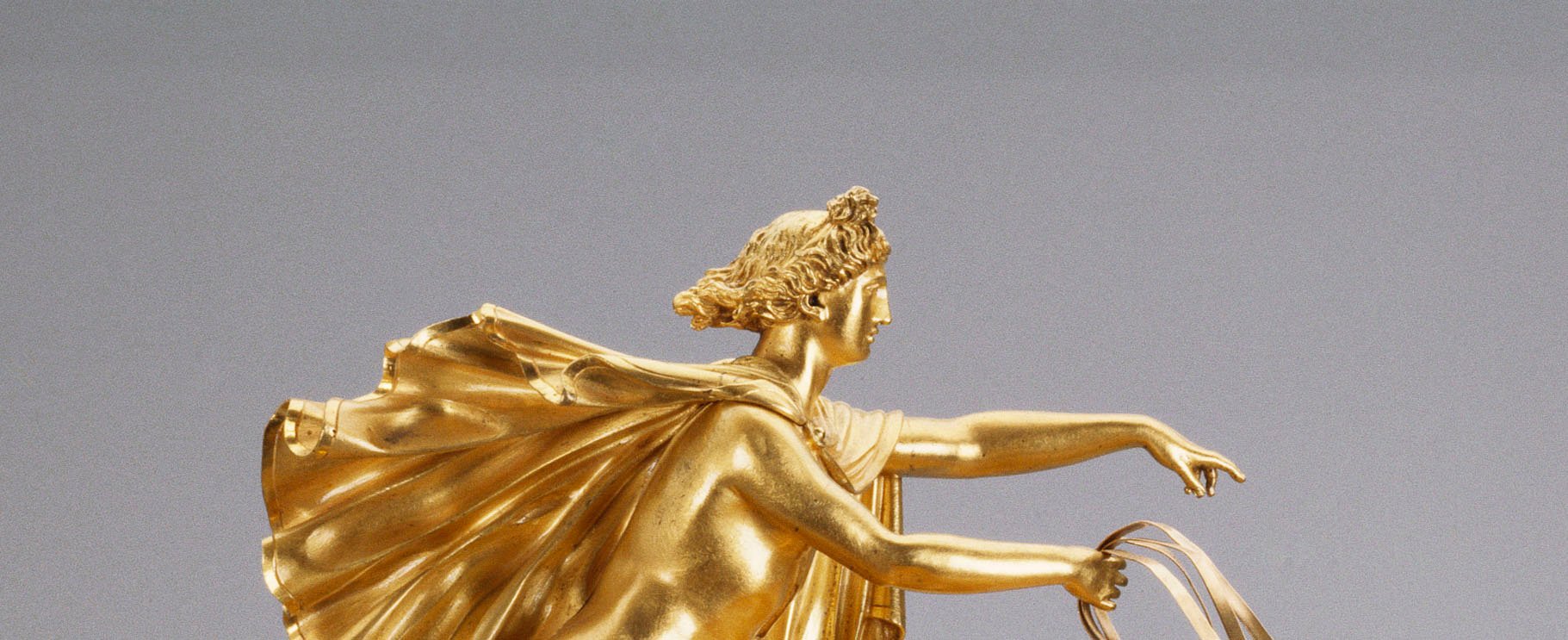
NORTHERN ITALY
Hercules
Bust: second half sixteenth century; socle: late nineteenth / early twentieth centuryRCIN 65740
Cameo with a bust of the warrior and hero, Hercules, cut in the round. He is bearded and looking over his right shoulder. The lion skin covers his head and is draped over his shoulders.
Similar small-scale busts were made by Milanese craftsmen in the grand ducal workshops of Florence to decorate cabinets and other pieces of furniture. The metal socle resembles those used as mounts for the Florentine examples. The ‘heroic’ Hercules representations possibly refer to Grand Duke Cosimo I de’ Medici (r. 1537-74). Hercules was the symbol of the city of Florence and it is well known that Cosimo likened himself to the hero.
Queen Caroline’s taste for hardstone carving was expressed at Kensington not only through the cameo and intaglio collection but also through a ‘crystal’ bust of Charles I which surmounted one of the cabinets, as well as this exuberant example of stone cutting which was housed in one of the drawers below.
In June 1763 Horace Walpole noted in his list of ‘Other pictures & curiosities’ of the late Queen Caroline at Kensington Palace a ‘fine bust of Commodus with the lions skin’ among the ‘great number of cameos and Intaglias’ in ‘the drawers below a cabinet’. In March 1764 a ‘Bust of Hercules in agate’ was among a number of gems and curiosities sent to her grandson, George III, from Kensington Palace by Walpole.
Text adapted from Ancient and Modern Gems and Jewels in the Collection of Her Majesty The Queen, London, 2008 and The First Georgians; Art and Monarchy 1714 - 1760, London, 2014
Similar small-scale busts were made by Milanese craftsmen in the grand ducal workshops of Florence to decorate cabinets and other pieces of furniture. The metal socle resembles those used as mounts for the Florentine examples. The ‘heroic’ Hercules representations possibly refer to Grand Duke Cosimo I de’ Medici (r. 1537-74). Hercules was the symbol of the city of Florence and it is well known that Cosimo likened himself to the hero.
Queen Caroline’s taste for hardstone carving was expressed at Kensington not only through the cameo and intaglio collection but also through a ‘crystal’ bust of Charles I which surmounted one of the cabinets, as well as this exuberant example of stone cutting which was housed in one of the drawers below.
In June 1763 Horace Walpole noted in his list of ‘Other pictures & curiosities’ of the late Queen Caroline at Kensington Palace a ‘fine bust of Commodus with the lions skin’ among the ‘great number of cameos and Intaglias’ in ‘the drawers below a cabinet’. In March 1764 a ‘Bust of Hercules in agate’ was among a number of gems and curiosities sent to her grandson, George III, from Kensington Palace by Walpole.
Text adapted from Ancient and Modern Gems and Jewels in the Collection of Her Majesty The Queen, London, 2008 and The First Georgians; Art and Monarchy 1714 - 1760, London, 2014







